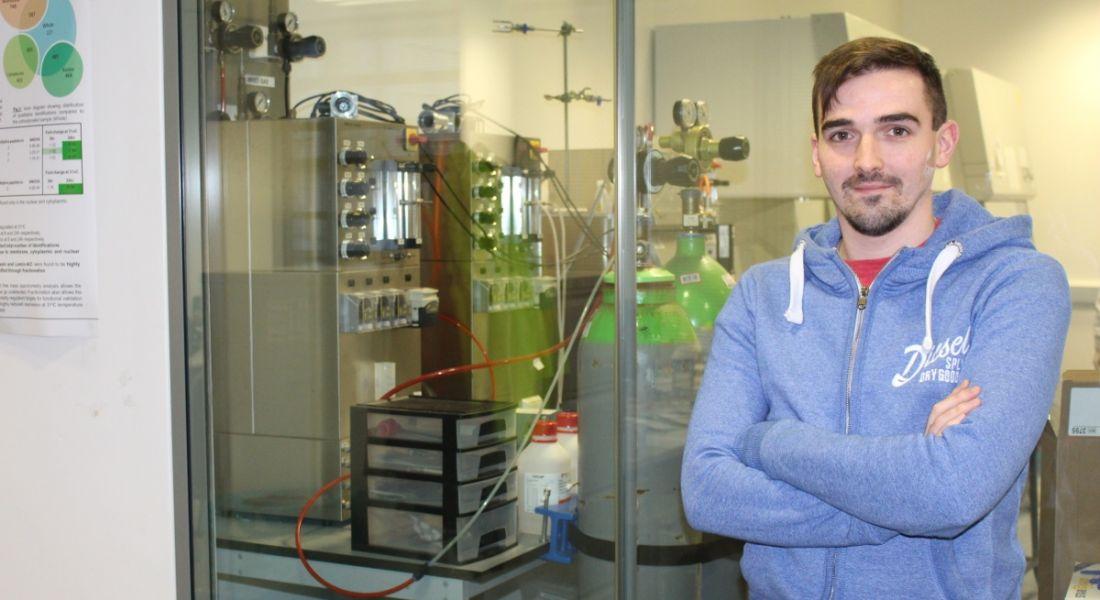What is your role within Dublin City University?
I’m a senior postdoctoral research scientist at the National Institute for Cellular Biotechnology (NICB), and my role is to engage in exciting research projects in collaboration with other academic institutions, as well as biopharmaceutical partners.
I additionally train and teach the next generation of researchers, both at undergraduate and postgraduate level.
If there is such a thing, can you describe a typical day in the job?
A typical day starts with a coffee at 8am to get fired up.
As we deal with biological living cells, there is no typical day in biotechnology research. We use a range of sophisticated equipment to better understand the cell lines that, ultimately, are used in the industry to make high-quality therapeutic protein drugs.
Research projects can often take several years to complete or at least get to the next stage of development. My role from day to day is to train postgraduate research students, maintain a safe working environment, carry out well-planned and well-timed cell-based experiments, and to communicate my results to the greater scientific community.
What types of project do you work on?
My research focus is on the Chinese hamster ovary (CHO) cell. This is the predominant cell line used in the global biopharmaceutical industry to produce life-saving therapeutic drugs for cancer, diabetes, arthritis etc. These cells are cultured in large 10,000-litre bioreactors in order to produce enough material to meet the global demand.
The cost associated with these vast manufacturing facilities is extreme, thereby ultimately making the access to the therapies very expensive to the patient. One project I work on is the use of disposable plastic bioreactors for drug production, rather than the current large stainless steel. We verify that the plastics used in the manufacturing of these bags are safe and non-toxic to both the producing CHO cells and, more importantly, the patient.
Alongside this, we strive to make these CHO cells better at producing therapeutic protein drugs. We do this by better understanding their biology, what nutrients they require to grow better and survive longer and, in a lot of cases, engineer them on a genetic level to enhance their performance within the bioreactor.
What skills do you use on a daily basis?
From day to day, I carry out routine cell culture in sterile, clean room environments, whereby I grow various CHO cell lines.
As we are interested in what’s happening at the cellular level, I employ a variety of molecular biology techniques and cell characterisation.
Although lab work is critical, disseminating and reporting our data is essential. Therefore, I write scientific papers to communicate and publish our findings.
What is the hardest part of your working day?
With an intensive research schedule, I often find it difficult to read as many scientific papers as I’d like, and to get a feel for other areas of research.
Do you have any productivity tips that help you through the working day?
I find that planning my day out allows me to use my time efficiently, which frees up time to write papers and potential grants.
When you first started this job, what were you most surprised to learn was important in the role?
This type of work is very much independent. Although I work as part of a research team, it is also very important to know and execute your own role without relying on others.
How has this role changed as this sector has grown and evolved?
Biopharmaceutical drug production has become one of Ireland’s major exports and so is attracting a lot of foreign investment. As a result of this, companies are engaging in close research collaborations with biotechnology-focused centres such as the NICB. My role has changed in the sense that I’m now being exposed to, and involved in, research programmes that are meeting the industry’s needs and, ultimately, helping the patient.
What do you enjoy most about the job?
I enjoy writing scientific papers for publication, and communicating the fascinating research that goes on in the NICB to the greater scientific community and the public through blog posts and promotional videos.

